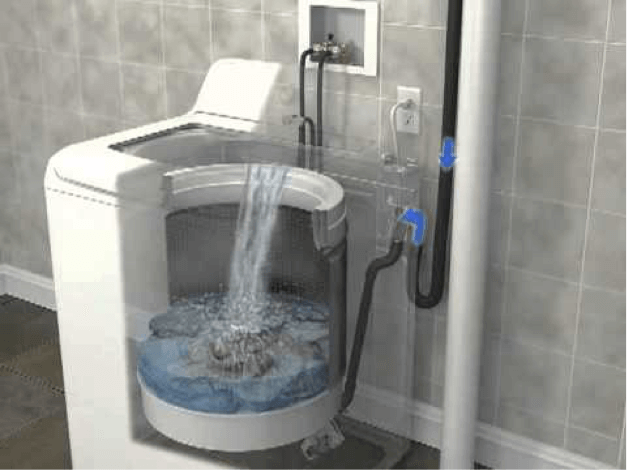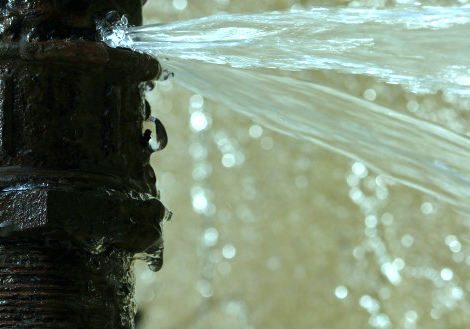We've discovered this great article on What To Do And What Not To Do When Dealing With Water Damage down the page on the web and thought it made sense to talk about it with you over here.

What should you do if a water pipeline ruptureds in your home, developing a mini-waterfall as well as swamping a location of your home? The longer you wait, the much more serious the water damages in your building. For these reasons, you need to learn what to in case of a burst water pipeline.
Shut Off the Key Waterline Shutoff
The first thing you have to do is close the shut-off shutoff. Seek the local shut-off valve to turn-off water in one certain area only. If you don't understand where the localized shut-off valve to the fixture is, you need to turn-off the main waterline shutoff. This will cut off the water in your whole house. Generally, the major shutoff is discovered outside the house beside the water meter. If it's not there, you can likewise find it in the cellar at an eye-level or maybe in the first floor on the ground. Normally, home builders yet the shut-off shutoff generally ground degree washroom or ideal alongside it.
Call Water Damages Remediation Pros for Help
After shutting the water resource, call the pros for assistance. Since they need to deal with the pipes and deal with the damages to your building, this is not something you can readily Do it yourself. Seek help from a trustworthy business offering 24/7 emergency solutions. With their professional help, you can alleviate exacerbation due to the fact that water can leak through your points resulting in deformed baseboards, loose ceramic tiles, or damages structure. Do not take this problem gently and look for profession support for full assurance.
File the Damages For Insurance
As you are waiting for the pros to get here, record the damage triggered by the wayward pipe. Staying positive with this permits you to submit a claim for coverage, which will assist you and also your family get back on your feet.
Restore Points That Can Be Conserved
Peruse the items as well as take out the most crucial ones from the pile once you're done taking pictures. Dry them off and attempt to maintain as much as you can. Drag them away from moisture so they can begin to dry out.
Beginning the Drying Refine
Fortunately, water from your waterlines are clean so you do not have to worry about sewage system water. The flowing water might have interrupted the dust and particles in your rugs as well as floorboards. Be prepared with handwear covers as you utilize buckets to unload out the water.
Specialists are the only ones qualified to deal with the burs pipes and succeeding damages. And bear in mind, pipelines don't simply unexpectedly burst. You will generally see red flags like bubbling paint, weird sounds in the plumbing, moldy smell, caving ceiling, peeling off wallpaper, or water stains. Take notice of these points, so you can nip any kind of problems in the bud.
What should you do if a water pipeline bursts in your residence, producing a mini-waterfall and swamping an area of your home? For these factors, you need to discover what to in situation of a ruptured water pipeline. After shutting the water resource, call the pros for help. With their specialist assistance, you can mitigate exacerbation due to the fact that water can leak through your points resulting in warped baseboards, loosened tiles, or damages framework. Fortunately, water from your waterlines are tidy so you don't have to stress regarding sewage system water.
BROKEN WATER PIPES: COST TO REPLACE & WAYS TO FIX A PIPE
CAUSES OF A BROKEN WATER PIPE
A water pipe can break for several reasons depending on the environment you live in, type of pipe, and circumstances.
The most common cause of broken pipes is freezing. If you live in a colder climate, this could happen. When water freezes it increases in volume by 9% and the pressure in the pipes can go from 40 psi to 40,000 psi. Clearly, this could be detrimental to the pipes. Water freezing causes quick expansion, which puts stress on the pipes and could lead them to crack or weaken. When water thaws, it will leak out the cracks. Other changes in water pressure can also cause breakage. Another common cause of broken water pipes is age.
Depending on the material, water pipes can last anywhere from 70-100 years. But the older they get, the more susceptible they are to weakening and corroding. Older pipes coming into contact with another material could speed up the corrosion process as well. PVC pipes can become brittle with age, while copper is prone to corrosion and stress over time. Something that could also potentially break water pipes is when they move. They may move from construction or the house settling. Moving can stress the fixed pipe which may lead to a leak or burst pipe.
HOW MUCH WATER COULD LEAK INTO YOUR HOUSE FROM A BROKEN PIPE?
The amount of water that leaks depend on how big the break in a pipe is. If it is just a minor crack, water will slowly leak out. This isn’t as serious as a full broken pipe, but it can still cause significant damage to your home. Burst pipes can leak up to 10 gallons of water per minute. The amount of water leaked also depends on what appliance is involved. The water line to your refrigerator can leak ½ to 1 gallon per minute depending on water pressure. One toilet supply line may leak 2-3 gallons a minute and a washing machine hose will leak up to 10-12 gallons per minute.
TURN THE WATER OFF
Doing this first is imperative; everything else can wait. You need to deactivate the water supply to stop the flow of water and prevent more water from leaking into your home. Shutting off the water could potentially save you thousands in water damage repairs. Locating the water shutoff valve depends on the climate you live in. For colder climates, the valves are usually inside, such as in the basement. For houses in milder weather, the shutoff valves will probably be outside—either attached to an exterior wall or in an underground box with a removable lid.
OPEN A FAUCET
The next thing to do is to open a faucet or turn on a sink. This will relieve any remaining water pressure in the pipes and ensure a full-shut down.
GET RID OF THE WATER
The quicker you get rid of the water, the less water damage and mold there could be. Use a mop and a shop vacuum to help get clean up the water. Use towels to dry everything the best you can.
CUT AND REMOVE THE DAMAGED PIPE
Once you have shut off the water and drained the damaged water pipe, you can begin to fix the issue. Cut out the damaged section of the pipe with a pipe cutter, ensuring that you also cut one inch extra on each side of the damage. Once you get rid of the broken part of the pipe, you may begin repairs.
https://www.wmhendersoninc.com/blog/broken-water-pipes-cost-to-replace-ways-to-fix-a-pipe/

Hopefully you liked our part about Do’s And Don’ts In Case Of Water Damage. Thank you for finding the time to read through our post. Do you know about anybody else who is occupied with the topic? Do not hesitate to share it. Bless you for your time. Visit again soon.
 Alfonso Ribeiro Then & Now!
Alfonso Ribeiro Then & Now! Robert Downey Jr. Then & Now!
Robert Downey Jr. Then & Now! Shane West Then & Now!
Shane West Then & Now! James Van Der Beek Then & Now!
James Van Der Beek Then & Now! Nicki Minaj Then & Now!
Nicki Minaj Then & Now!